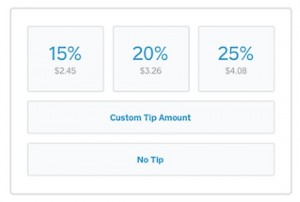When marketers talk about omnichannel marketing, a key component of that is making sure that every time a customer encounters your brand, they have not only a positive experience, but a consistent one as well.
Too often that isn’t the case. Email in particular, and especially those that don’t originate from marketing, can frequently lack the look and feel of other channels, which can undermine the offer or message you’re trying to convey. A recent survey of 200 consumers from Software Advice showed 41 percent of respondents viewed consistency as a more important factor in brand loyalty than authenticity, relevance, or transparency. In a recent survey conducted by Sendwithus, the makers of Dyspatch, and the CMO Council, 32 percent of Enterprise marketing leaders said that implementing controls across touchpoints to ensure consistent experiences would have the greatest impact on their businesses.
Inconsistency in email often happens because marketers, and in some cases the agencies they use, haven’t established a system for sharing assets and content, or for managing their appropriate use. Below we’ll look at how to go about setting up such a system.
First, determine what the system should do
Creating a centralized system should start with a definition of the problems it seeks to solve. One might be the lack of centralized storage, another could be wide open access to assets and content, both for use and editing.
The latter is one of the most common problems, resulting in a lack of oversight into how and by whom assets are being used. In a distributed marketing model, for example, it’s often impossible to know that a franchisee or dealer is still using a non-mobile optimized newsletter template they saved from two years ago, let alone prevent it from happening.
Centralizing assets
There’s little upside to spreading digital assets across multiple locations. Centralization means that there can be no confusion about where the assets are housed and no time wasted looking for them. Most importantly, it means that when assets are updated, such as brand logos, there’s no risk of missing any and leaving old versions available for use.
A cloud-based communications platform will work best but unfortunately, most marketers still aren’t using a centralized platform. Just 13 percent employ a centralized platform to facilitate collaboration across teams, according to the Sendwithus and CMO Council survey.
Making sure everyone involved in email communication with customers understands that there is only one, central platform to access assets and that those assets must be accessed from within that platform every time they’re needed, will ensure that everyone is always using the most current versions.
Authorization
A company’s level of control over its digital assets will vary based on structure. Some industries, like healthcare, will require more control because of stringent regulation. But in other cases, franchisees and dealers will have more freedom to customize.
A cloud-based solution allows for asset access among a distributed workforce. Administrators can manage permission levels, which can range from access only to versions locked against modification to full editing access. Access can also vary based on the type of asset. A franchisee, for instance, might have full access to generic email templates but may need to request permission to use a template that pulls personally identifying data.
A consistent vision
An asset-management solution is a means to an end. For marketers, that end is a consistent brand experience, regardless of whether a communication originates from a corporate marketing department, a product team, or from an independent dealer. Define how you want the customer to experience your brand, across all touchpoints, and establish centralized processes to ensure those experiences remain consistent.
Digital & Social Articles on Business 2 Community(39)
Report Post



